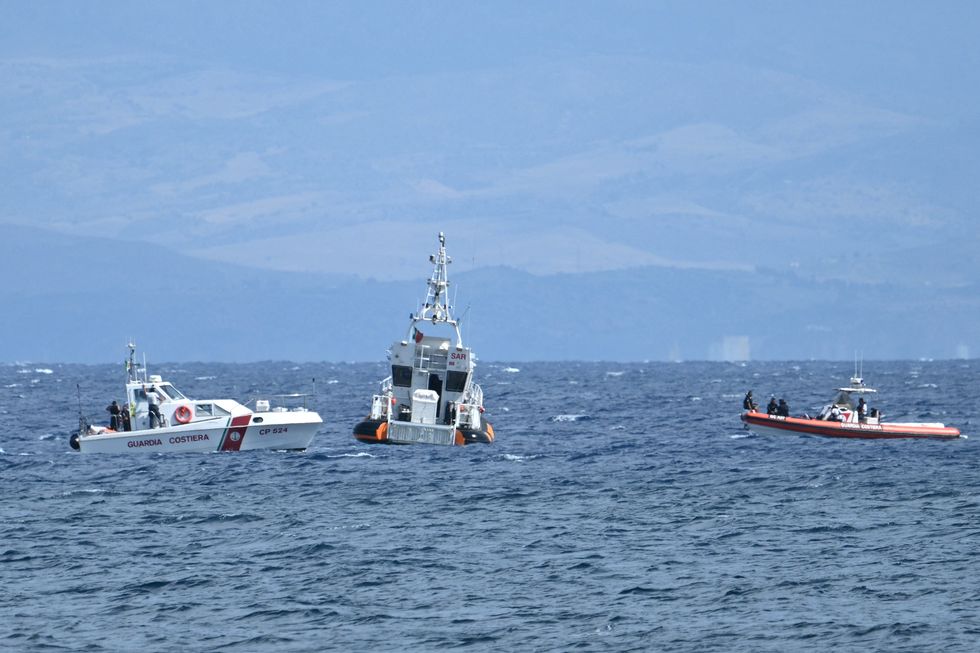News
Sinead Butler
Aug 21, 2024
Who is Mike Lynch, the billionaire tech entrepreneur missing after sailing yacht …
Various
Maritime experts believe the recent sinking of a Bayesian superyacht could have been due to a rare “black swan” weather event.
It is thought the 22 passengers and crew on board didn’t have time to react on Monday (August 19) when the abrupt appearance of a tornado-like waterspout – a column of rotating air that forms over a body of water - capsized and sunk the vessel within minutes.
The bodies of four out of the six people missing have been recovered by Italian divers, taking the number of people dead to five as the search operation off the coast of Sicily continues.
The Italian Coast Guard confirmed the bodies of Mike Lynch, Jonathan Bloomer, his wife Judith Bloomer, lawyer Christopher Morvillo and his wife Neda Morvillo were recovered.
Lynch's youngest daughter Hannah still remains unaccounted for.
A “black swan” event refers to weather that is extremely rare and can have a devastating impact, one example of this is Hurricane Katrina back in 2005.
"That water carries significant weight,” Matthew Schanck, chairman of the Maritime Search and Rescue Council, explained to The Times. “And if the waterspout ends up dumping a load of that water on board the vessel, that’s going to cause significant damage.”

In the time leading up to the disaster, weather conditions had all the makings to form the powerful waterspout, meteorologists say.
On the day of the sinking (August 19), there were 18 confirmed waterspouts off the coast of Italy, as per the International Center for Waterspout Research.
“There was a big thunderstorm just to the north of Sicily, a lot of lightning activity, lot of heavy rain, very strong signature of what we call ‘cold cloud tops’ on the satellite pictures,” explained Dr Pete Inness, a meteorology lecturer at the University of Reading.
“All of those things would add up to a thunderstorm that could easily spawn a waterspout”.
He added that while tornados can be estimated by officials, further information such as the strength, isn’t known until it is formed. Plus, waterspouts don’t last long so like tornadoes, radars don’t always detect them.
Additionally, the weather event occurred at night, making visibility for the crew even more difficult.
Though, Luca Mercalli, a leading Italian climatologist believes the crew should have paid closer attention to the radar and weather alerts.
"I don’t know if there was anyone on board consulting the radar,” he told The Telegraph.
"Let’s say that if I had been on board, at the first sign of a thunderstorm I would have woken up all the occupants and been ready and alert with life jackets on until the storm was over."
According to Mercalli, the weather radar could estimate intense thunderstorms within 15 to 30 minutes.
However, Schanck doesn’t think this would’ve made a difference as he doubted that the crew would have been prepared for such a “high impact, low probability” weather event.
“I’ve reviewed the forecasts. There was nothing other than thunder. There was nothing that jumped out to me that made it a dangerous decision to anchor there,” he said.
One theory that has been ruled out is that the 240-foot-tall mast increased the vessel’s vulnerability in extreme conditions.
A rescue diver told Italian media the yacht was "practically intact" on its side at the ocean's basin, about 50m below the surface with "no gashes, no signs of impact".
An investigation into the disaster has been opened by prosecutors in the nearby town of Termin, which is expected to take months to complete.
Sign up to our free indy100 weekly newsletter
How to join the indy100's free WhatsApp channel
Have your say in our news democracy. Click the upvote icon at the top of the page to help raise this article through the indy100 rankings.
Top 100
The Conversation (0)














